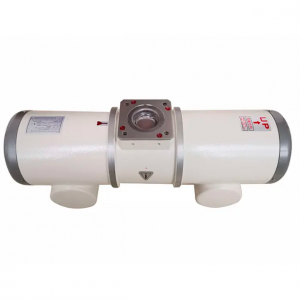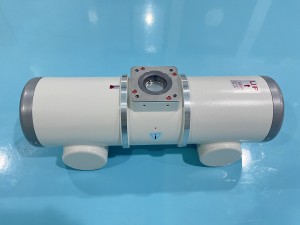X-ray machines play a vital role in modern medicine, helping to diagnose and treat various diseases. At the heart of these machines is a vital component called an X-ray tube, which generates the X-rays needed to capture detailed images of the human body. X-ray tube technology has made significant advances in recent years, particularly for computed tomography (CT) scanning. This blog aims to explore these developments and their impact on the field.
Learn about X-ray tubes:
An X-ray tube is essentially a vacuum-sealed device that converts electrical energy into X-ray radiation. A major breakthrough in X-ray tube technology was the introduction of rotating anodes. This innovation enables higher power output and faster scan times, making CT scans more efficient and precise. In addition, modern tubes use tungsten as the target material due to its high atomic number, enabling the generation of high-quality X-ray images.
CT scan and why it’s important:
A CT scan is a non-invasive medical imaging technique that provides detailed cross-sectional images of the body. These images reveal complex internal structures, helping doctors accurately diagnose and treat medical conditions. CT scans are often used to evaluate areas such as the brain, chest, abdomen and pelvis. Advances in X-ray tube technology have greatly improved the effectiveness and safety of CT scans.
Improved image resolution:
A major advance was the development of X-ray tubes with smaller focal points. Focus is a key factor in determining the resolution of the resulting image. Smaller focus improves image sharpness and clarity, allowing for more accurate diagnosis. This improvement is particularly beneficial for detecting smaller abnormalities and lesions that may have been missed by previous generations of X-ray tubes.
Reduce radiation dose:
Another important issue in medical imaging is radiation exposure. To address this problem, manufacturers have implemented technology designed to reduce radiation dose during CT scans. The X-ray tube's increased heat resistance, combined with advanced cooling mechanisms, enables longer scanning procedures without compromising patient safety. By optimizing the efficiency of X-ray generation, these advances successfully reduce radiation dose while maintaining image quality.
Enhanced speed and performance:
As technology advances, so does the need for faster, more efficient scanning. Manufacturers have responded to this need by introducing X-ray tubes capable of producing higher tube currents, thereby increasing scan speeds. This improvement is critical in emergency situations where time is of the essence, allowing healthcare professionals to quickly assess serious injuries or conditions.
in conclusion:
Advances in X-ray tube technology have revolutionized the field of CT scanning, providing healthcare professionals with higher image resolution, lower radiation doses and higher speeds. These developments have greatly improved the accuracy and efficiency of diagnosis and treatment of medical conditions. As technology continues to evolve, we can expect further innovations in X-ray tube technology, opening the door to more precise and less invasive medical imaging techniques. With every step forward, the future of radiology becomes brighter, leading to a healthier tomorrow for all.
Post time: Oct-16-2023



